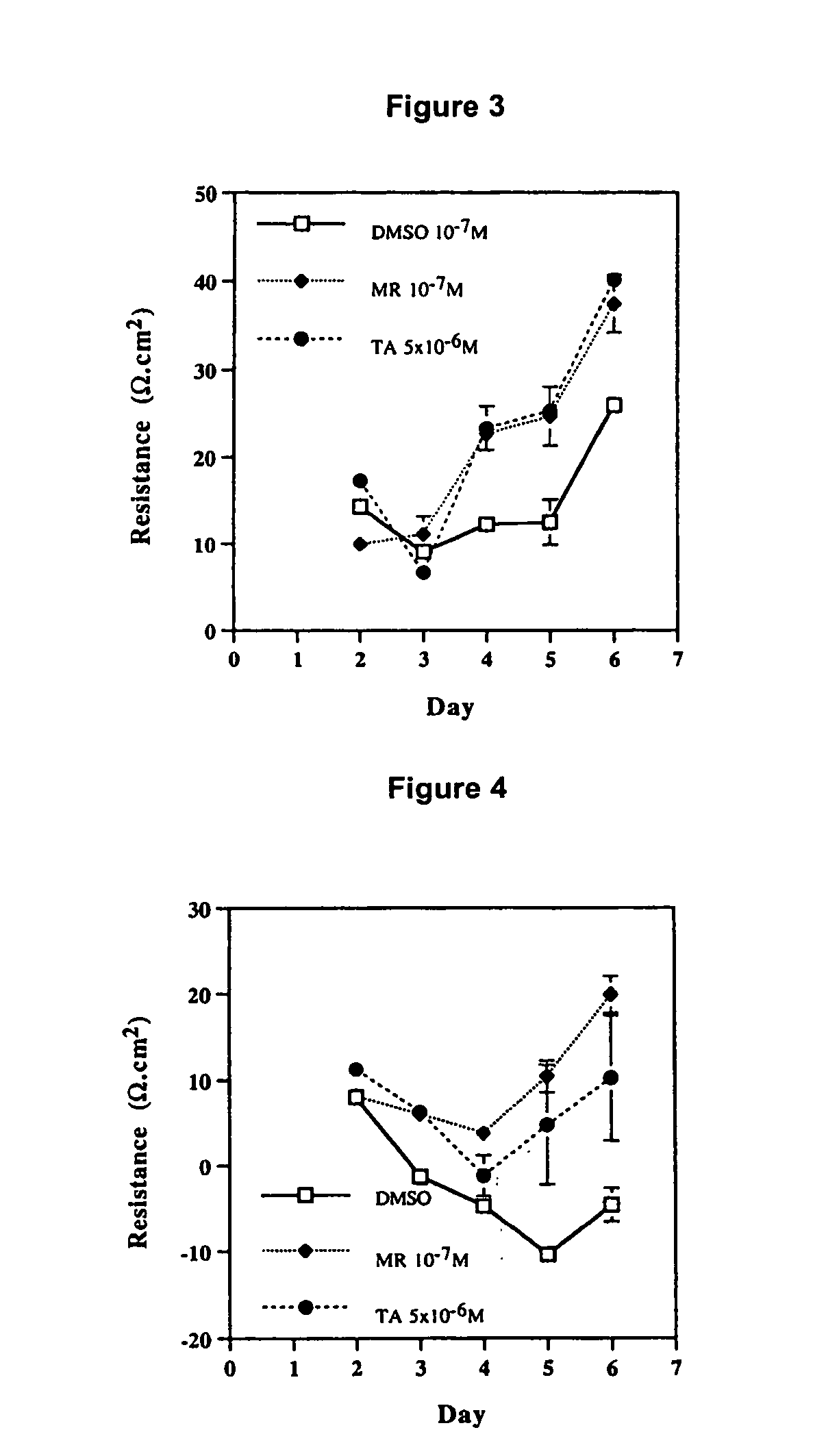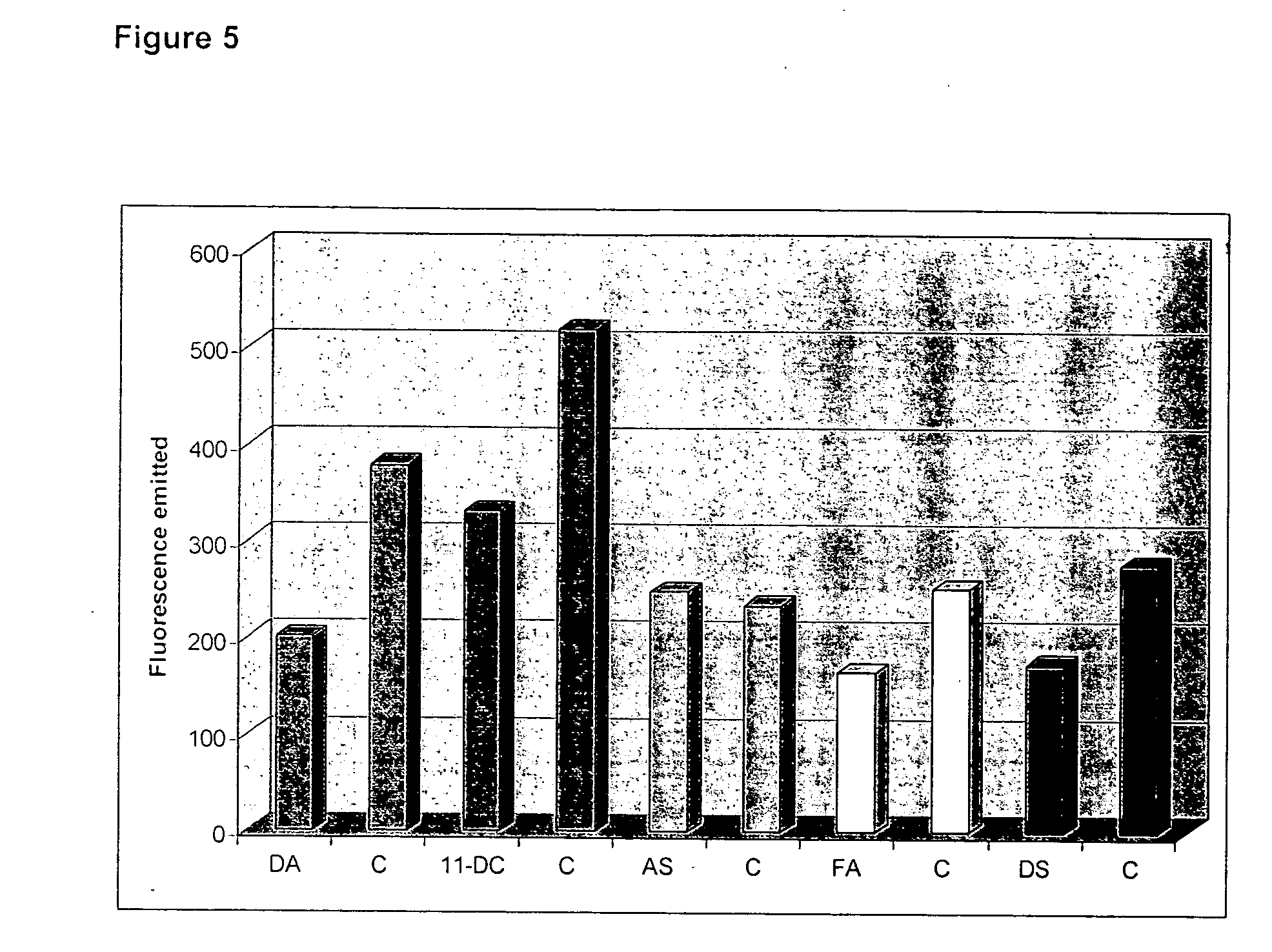Treatment of ophthalmic conditions
a technology for ophthalmic conditions and treatment methods, applied in the direction of medical preparations, antipyretics, analgesics, etc., can solve the problems of ocular clouding, significant vision occlusion, exudative retinopathy, and vision impairmen
- Summary
- Abstract
- Description
- Claims
- Application Information
AI Technical Summary
Benefits of technology
Problems solved by technology
Method used
Image
Examples
example 1
[0256] To show the capacity of a mineralocorticoid, specifically fludrocortisone, to down-regulate receptors involved in biochemical pathways associated with oedema and exudative retinopathies, an assay was conducted looking at the activity of VEGF receptors Flk-1 and Flt-1 in choroidal endothelial cells. Flk-1 is known to be involved in cell proliferation whilst Flt-1 is involved in cell permeability.
[0257] The expression of Flk-1 and Flt-1 was measured, using fluorescence activated cell sorting (FACS) analysis, in untreated cells, cells treated with phorbolmyristate acetate (PMA), cells treated with PMA and then with the glucocorticoid triamcinolone acetonide (TA) and cells treated with PMA and then with the mineralocorticoid fludrocortisone. PMA is a model for pro-inflammatory cytokines and TA is known to block the glucocorticoid receptor
[0258] From FIG. 1 it can be seen that expression of Flk-1 is increased compared to control cells by administration of PMA. However, this incr...
example 2
[0260] The expression of Flk-1 and Flt-1 was also investigated in untreated choroidal endothelial cells, choroidal endothelial cells treated with Tumour Necrosis Factor-α (TNF-α) and choroidal endothelial cells treated with the mineralocorticoid fludrocortisone. TNF-α is a pro-inflammatory cytokine.
[0261] Expression of FLK-1 is down-regulated from the levels in untreated cells by administration of fludrocortisone. Cells treated with TNF-α express higher levels of Flt-1 than untreated control cells. However, administration of fludrocortisone slightly reduced the expression of Flt-1 compared to control cells
example 3
[0262] Transendothelial electrical resistance (TER) is a method of measuring cell permeability and thus exudative capacity. High electrical resistance reflects tight cell barriers and low cell permeability. In contrast, no resistance or negative resistance indicates the presence of looser junctions in the cell barrier.
[0263] Choroidal endothelial cells treated with dimethyl sulfoxide (DMSO), a surfactant which disrupts the cell membrane, have low electrical resistance, as indicated in FIG. 3, compared to cells treated with fludrocortisone or TA. The increased resistance in the presence of fludrocortisone or TA indicates that the steroids aid in the maintenance or repair of the cell membrane barrier, resulting in a reduction in exudation and oedema.
PUM
 Login to View More
Login to View More Abstract
Description
Claims
Application Information
 Login to View More
Login to View More - R&D
- Intellectual Property
- Life Sciences
- Materials
- Tech Scout
- Unparalleled Data Quality
- Higher Quality Content
- 60% Fewer Hallucinations
Browse by: Latest US Patents, China's latest patents, Technical Efficacy Thesaurus, Application Domain, Technology Topic, Popular Technical Reports.
© 2025 PatSnap. All rights reserved.Legal|Privacy policy|Modern Slavery Act Transparency Statement|Sitemap|About US| Contact US: help@patsnap.com



